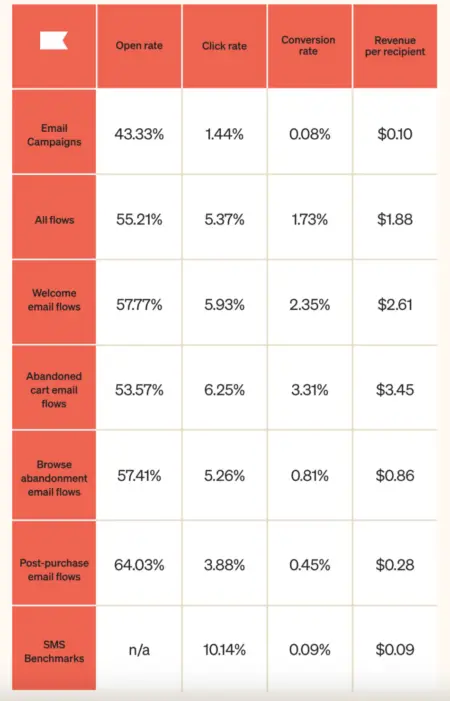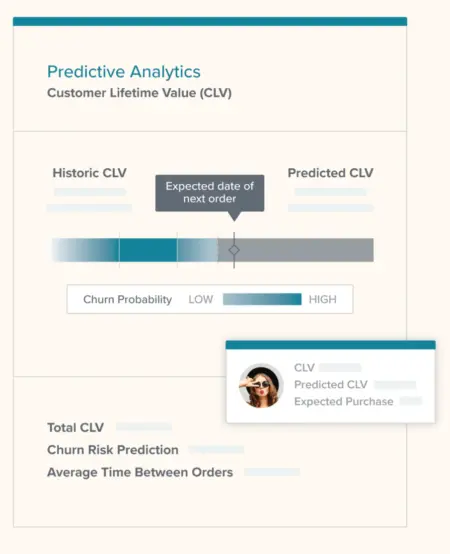Email segmentation tools have evolved—and you should use them to do the same

As we head into the mid-2020s, you likely already know the value of email segmentation.
What you may not understand is how digital tools have evolved to make segmentation one of the most impactful ways to engage people in an era of information exhaustion.
Basic email segmentation splits your subscriber list into smaller groups of people with shared characteristics. It’s the backbone of personalized messaging that improves brand trust and creates more relevant customer experiences.
But now, online behavioral triggers, real-time automated list updates, predictive analytics, and cross-channel integrations have come along—the sophisticated levers necessary for capitalizing on the benefits of email segmentation, without straining company resources.
“Advanced segmenting and clear analytics have allowed us the flexibility to target customers with market-specific content based on shopping behaviors,” explains Kathleen Loftus, global digital director at ICONIC London. “These crucial insights helped us dramatically increase our email revenues.”
The best email marketing platform to execute your segmentation strategy is one that matches your imagination step for step. If you have a great idea for how to segment your audience, you need a tool that will bring that segment to life.
This article describes what that looks like so you know it when you see it.
First, some background: the data on email segmentation
According to the latest Klaviyo benchmarks, automated email flows beat out email campaigns handily on click rate, conversion rate, and revenue per recipient.

While it’s absolutely possible to segment email campaigns, they typically go out to larger groups of people. Automated email flows, by comparison, are triggered by behavior: A subscriber takes an action on your website, like placing an item in a cart, and receives an email related to that action.
When your segments are rooted in these behavioral triggers, the messages that result are inherently more personalized—and therefore more likely to drive engagement and revenue.
To squeeze even more value out of them, you can build on those triggers with these 4 email segmentation evolutions:
1. Triggers based on zero- and first-party customer data
Zero-party data is information people voluntarily offer to brands, like their email address or phone number. It’s a privilege your new subscribers grant to your brand.
Marketers can supplement zero-party data with first-party data, which is based on observable actions people take on your owned properties such as your website or your email and SMS messages.
This data combination is the power couple of segmentation. It allows for email personalization based on not only psychographic and demographic data, but also the individual actions someone takes.
Here are a few examples:
- Past purchase history or frequency → Treat VIPs and frequent buyers like gold with early access to new products.
- Website visit activity → Exclude existing subscribers from seeing on-site sign-up forms.
- Email message engagement → Switch from brand storytelling to selling for highly engaged subscribers.
- Customer reviews → Reward people who submit a photo with their customer review with a discount.
- Acquisition source → Push brick-and-mortar subscribers to certain landing pages on your website.
- Last-viewed products → Send product announcements or discounts based on interest.
- Abandoned cart value → Maximize ROI by giving a discount only to subscribers with high abandoned cart values.
Results will ultimately depend on the quality of your data, how you segment your lists, and the content developed for each segment. DTC pet brand and Klaviyo customer Paw.com, for example, achieved a 145x monthly average ROI using email segmentation tools in Klaviyo.
2. Dynamic segments that update automatically, in real time
In order to power the kind of personalized marketing efforts that drive return on investment, email segments need to update automatically. If you have to update segments manually, you’ll either be limited in what you can send, or you’ll spend so many resources on data science that your ROI from email will plummet.
That’s because email segmentation is based on the historical and real-time data your business collects across all customer touchpoints—which gets complicated with a non-linear buyer’s journey.
Klaviyo’s segmentation features are dynamic, meaning they grow as people meet the segments’ conditions and shrink as people no longer meet them. The marketing automation platform powers smarter digital relationships by consolidating data from email and website behavior, third-party data across other platforms, purchase data, customer loyalty programs, and more.
Mike Grasewicz, director of marketing at Taylor Stitch, is able to do more with less with Klaviyo.
We’re making segments that are dynamic, which allow us to hone in on sending emails to the right people without having an in-house data science team.
“Email accounts for a large percentage of our revenue,” he says. “We’re making segments that are dynamic, which allow us to hone in on sending emails to the right people without having an in-house data science team.”
3. Predictive analytics
What if you could make reasonable assumptions about your customers, then make decisions based on those assumptions?
This is how using predictive analytics adds sophistication to email segmentation. When a customer data platform has access to enough anonymized data from thousands of customers, that platform can offer insights back to brands so they can make decisions based on how customers are likely to behave in the future.
Klaviyo, for example, compares individual purchase behavior to similar behaviors across your business’ customer population—especially behaviors that lead to repeat purchases. This is how Klaviyo predicts total customer lifetime value, churn risk, and next order date.

And when you have access to this kind of information, your brand can target audience segments based on predicted behavior.
You might, for example, send a win-back email to a segment of people with a high risk of churn. Or you might send a promo email to people whose predicted next order date is a little ways away.
Some brands even use predictive analytics to guess the gender of certain customers based on specific signals.
We’ve seen a nice performance lift.
“Since we started segmenting our audience using Klaviyo’s predicted gender, the content or even just the subject line is more specific to the gender that the subscriber is shopping for,” says Colleen Maloney, senior marketing manager at Ministry of Supply. “We’ve seen a nice performance lift.”
4. Cross-channel integrations
As marketing evolves, omnichannel marketing is becoming a more common way for brands to create cohesive experiences for their customers across multiple channels.
Good thing, then, that segmentation isn’t only applicable to email. You can also use it in cross-channel experiences like paid social, SMS, on-site forms, mobile push, and customer reviews.
An important byproduct of an omnichannel experience is the ability to segment audiences based on integrated data from multiple channels. For brands with a paid ads strategy, this could mean retargeting email subscribers on social media. For brands with an app, this could mean using segmentation to push different notifications to different users depending on how much they use the app.
Compass Coffee uses cross-channel segmentation to incentivize customers to upload a photo with their review. To do this, the brand sets up a conditional split in Klaviyo: If a review has a photo, the reviewer gets a 15% discount on their next order; if it doesn’t, they simply get a thank-you email and a reminder to leave a photo next time.
Klaviyo wins on the customizability of the review collection correspondence.
“Klaviyo wins on the customizability of the review collection correspondence,” says Joel Shetterly, CMO at Compass Coffee. “The rate of review collection is completely solved; the rate of photo collection is completely solved.”
How Klaviyo brands use segmentation to increase revenue
- Tecovas sends to their full list only once on the first day of BFCM, then targets customers who clicked on recent emails but haven’t yet purchased.
- Bearpaw boots focuses off-peak summer sends on window shoppers and higher-intent customers, maintaining steady open rates and click rates through the off-season.
- Compass Coffee encourages and rewards photo reviews with discount codes by using conditional splits in flows.
- Balsam Hill clones American email experiences, then localizes them across international geographies.
Email segmentation FAQs
What is email segmentation?
Email segmentation is an automated way to group email subscribers into precise audiences that update in real time, so you can send relevant messages based on website activity, shopping behavior, and brand engagement. Segmentation helps businesses tailor their communication to audiences with different needs, increasing the likelihood of a sale.
Why is email audience segmentation important?
Email audience segmentation is crucial to sending relevant messages to people based on how they actually interact with a brand. By understanding the unique needs and preferences of different segments, brands can improve engagement and conversions at scale.
How does email segmentation work?
Email list segmentation works by dividing an email list into smaller groups based on online behavior, purchase history, or engagement level. Automated segmentation sorts people into segments in real time when they fit (and cease to fit) certain criteria set by a user. Once segmented, brands create targeted emails and personalized content for each group, which increases the return on investment of email marketing messages.
What is the best email segmentation tool?
The best email segmentation tool is a platform like Klaviyo, which powers smarter digital relationships by pairing marketing automation functionality with a customer data platform (CDP)—housing data collection and activation tools under one roof.


